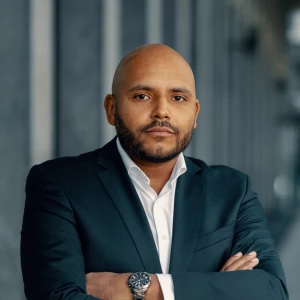how does mobility between mckinsey offices work (I'm starting in the middle east but interested in exploring other geographies too)

Mckinsey transfers/mobility between different offices


Hi there,
Great question! There are different types of mobility in the firm:
1) Engagement loan: You go to a different geography for the course of a project. Usually fairly easy to arrange when you establish yourself/begin to specialize in a practice/function and unless your home office is very short staffed they will usually let you do the project. You tend to source these projects through practice mailing lists/staffing logs or through your network
2) Rotation: You can apply to send a period of time (call it six months to a year) in an office. There is usually a formal application process and someone from the host office's mobility team/committee will talk to the people you've worked with. Certain offices (the ones you would usually suspect e.g., ldn/nyc) will be more competitive
3) Transfer: Here you can apply to move on different tracks (either personal, professional or a combination of the two). The process will be quite rigorous (if you are not applying on compassionate grounds) and will have to have partner sponsors from both your home office and the new office (ie. people that will be willing to staff you). Hence why it is usually easier to go through this process once you have done a couple ELs/at the end of the rotation. There also tends to be a performance rating/ranking requirement for certain offices


You can move office, but it takes some effort on your part. In general it requires:
- That you have a really good reason for wanting to move - generally linked either to your personal life (e.g., partner or family are in the new place / need to be in the new place); or that your career cannot progress without being exposed to the industry that the new office serves.
- You have partner sponsors in the new office who will tell the office manager (each office has a partner who is responsible for running the office) that they will staff you and sponsor you when you arrive. They don't want you to move without knowing that you'll be staffed (put in a project) in the new office.
- That you're a high performer (you need to at the very least be meeting expectations, but normally exceeding them)
- That you've been in your home office for at least a year - basically to pay off the investment that they've put into training you
It's an entirely doable switch - I did it myself and know many people who did. But it does require some work on your end!


Hi there,
It's a bit harder than they tell you upfront.
Basically, you need to have a strong pull and a strong push.
Strong pull:
- ideally find a Partner or two that you work with regularly that are in the target office you want to transfer to. They will make the case that they need you on a regular basis and it's better if you're in their office
- develop some sort of industry / functional knowledge that will make you attractive for that location (e.g., mining for Australian offices)
Strong push:
- Have a v good reason why you want to transfer, e.g., my wife lives in that city
- Make sure the leadership in your office is ok with you leaving and supporting the transfer (small offices really don't like transfers out of their nest)
Aside from this:
- Start the process early (it lasts way longer than expected)
- Reach out to other people from your office who transferred to that location
- Get PD involved as early as possible
- And don't get easily discouraged.
Best,
Cristian

Kiran's answer is spot on.
I would like to add as someone that did transfer in McKinsey - work hard on building a good name for yourself. The most important thing in obtaining a transfer is getting partner support in the country you want to go to. The easiest way to do this is to have partners you have worked for refer you to the offices and speak highly of you. This obviously happens when you work hard and meaningfully contribute to projects.
Best,
Udayan

Hello,
I think that Emily and Kiran's advice is spot on! My additional two cents:
- Networking is really crucial. There's no strict formal process to doing a transfer, so you have to rely on your network at your current office and the office you wish to transfer to. Start talking to people early.
- Even if you haven't officially transferred, it is possible to get staffed on projects in different geographies. Look out for those opportunities - they will also be crucial to your networking.

Hi there,
I've transfered a few times within companies and have the following advice:
1) Build a stellar reputation - do good work, work hard, and be known as "the guy/gal" for xx
2) Build your network - network agressively (yes, networking doesn't end once you've gotten the job offer). Make sure you're known by and have allies in people who make decisions such as staffing managers, Partners (specifically those responsible for recruiting/resources and who are heads of industry/function verticals), etc.
2) b). When I say network "aggressively" please don't be needy/annoying :) There's nothing worse than someone who is obviously working the room or trying to please!
3) Look out for opportunities - as mentioned in this Q&A already, look for office transfers, short-term projects, ambassadorships, etc.)
4) Practice patience and be flexible - how long have you tried for? This might take a year. And you need to be ready to go at the flip of a coin.
Bide your time, keep pushing, be smart, and you'll get there!

Hey there,
A lot of good answers here already.
I want to add one thing:
Since McKinsey has a global P&L and staffing model it is much easier to get international exposure than in other firms and you can really chart your course based on your preferences (+how you perform + how well you play the networking game).
I only did international engagements, some prefer to stay local, and others try to transfer very early due to personal reasons, which is possible if you play the networking game well.
All the best at McKinsey!
Cheers,
Florian

Hi!
I transferred across geographies several times within my time at McKinsey and BCG. In general, global mobility is still a bit easier within McKinsey. They also have the most structured and globally harmonized process.
The most important factor for transferring is being in good standing (good performance rating) and a clear "story" of why you want/need to move. On top of this, you have to get the support of the receiving office ("pull"), ideally by a partner, and your current office's PD needs to support you.
The first one or two years are difficult to change to another geography, because it is hard to cater for point a) above at such an early tenure, and pyramids will most likely be bottom-heavy in your target location anyway.
It becomes easier with Seniority. At McKinsey, especially EMs are a very scarce and valuable resource. Hence, it is easier to get the pull from the receiving office as an EM (almost all offices are in structural need of good performing EMs)
Cheers, Sidi













